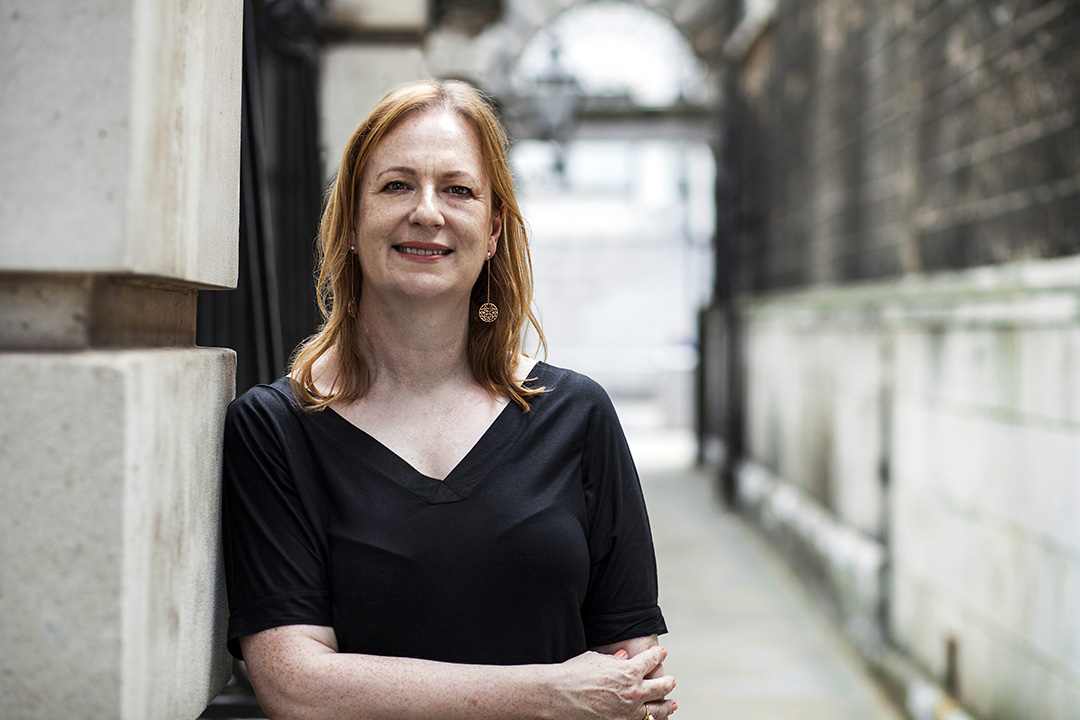 Fine art collector, philanthropist and a benefactor to the Royal Academy of arts and the Victoria & Albert museum. The John Madejski fine rooms at burlington house were named after him in recognition of his £3m contribution to the institution and the John Madejski garden at the Victora & Albert was opened in 2005.
Fine art collector, philanthropist and a benefactor to the Royal Academy of arts and the Victoria & Albert museum. The John Madejski fine rooms at burlington house were named after him in recognition of his £3m contribution to the institution and the John Madejski garden at the Victora & Albert was opened in 2005.
Q. Do you consider art to be an important part of cultural education? What do you think of the governmental budget cuts directly affecting the arts?
JM. Art is a stimulation of mankind. It so thought provoking, rewarding, enriching and enabling – it just covers so many aspects of our daily life and it is there for everybody. Everybody can enjoy it and a lot of people can ‘perform’ art which is what makes it so special. Regarding the cutbacks – I’m afraid it’s inevitable. People have to appreciate that in this day and age when times are really tough everybody and everything has to endure economic rebalance. The art world is blessed by the fact that we have so many wealthy people that are benevolent towards the arts, and certainly the establishment encourages that. Whatever cutbacks there
may be, obviously arts and artists will continue to thrive. It is interesting to note that the Royal Academy of Arts has no government funding and it is solely by the largesse of many people around the world that it flourishes. This just goes to show that art can survive on its own two feet. People are drawn even more to art when times are hard because they find it a source of solace, wellbeing and indeed, inspiration.
Q. Does being an art collector define you? If art were not a part of your life, what would (define you, that is)?
JM. I have more interests in life than just art. That said, art comes into most forms of life one way or another. The word ‘art’ is very abstract. One can tailor the word art to anything one likes. Sometimes I am appalled by the things I see in the name of art. I question if it is me or them – often I just don’t understand it. Someone may put something in front of me and claim it is art; my reply will
be, ‘Fair enough, that is your interpretation’. The most amazing thing about art is that everybody has a viewpoint and whilst this might differ, art touches everybody. You see art everywhere you go, even if you are walking down the street. You can see art in that. I lived in London for a long time and had become so used to seeing streets, houses, cars and tarmac roads. I had forgotten what the countryside was like and how wonderful it is. One gets claustrophobic in big cities. People who aren’t able to get out and remain in this concrete jungle don’t find any inspiration.
Q. Do you collect contemporary art? Why/not?
JM. I don’t ‘collect’ any art. Rather, I did buy many important works: I owned ‘La Petite Danseuse’ by Degas but this is not something to keep in a private sitting room. It is such an iconic work, it should be enjoyed by millions of people and it is – at the Royal Academy of Art. I ‘collect ‘when I can and if something reaches out to me I will buy it. Art is something one can always view anywhere – you do not necessarily have to own any to appreciate it.
Q. In your estimation, how much of the last decade’s art explosion is due to the fact that the art market functions as an unregulated stock-market?
JM. Art is fashionable – what people are craving to buy today they might not be tomorrow which is in itself fascinating. A lot of people invest in art as a safe haven but there is no guarantee of appreciation by any means. There are clearly many iconic works but a lot of art is merely ‘fashionable’. There are clear market forces – take a Van Gogh: it’s unique, it won’t be replicated (unless it
is a forgery) and its inherent value is obviously there so it won’t go out of fashion as such. One can always sell an iconic art work if everything else fails.
Q. If we accept that a work of art has no value until it is auctioned off by Christies or Sotherby’s, is there any point in collecting outside of the mainstream?
JM. That’s a very cold way of looking at it. Art ought to be bought because you like it, not just for its monetary value. While in many cases art’s value has increased at a greater rate than stock market investments, you can still go wrong and I’d hate to think people buy art because of that; I’d hope that they buy art because they really enjoy it and want to live with it. I’d never buy an art work fora pecuniary gain – I buy it because I like it and that’s the only reason.
Q. What differentiates a collector from a hoarder?
JM. A hoarder is a person who has…a slight problem. Art galleries and museums simply haven’t got the space to show many of their artifacts. Yet, they’ve got them and can’t get rid of them – often they’re not allowed to and so they must keep them hidden in underneath vaults. It’s not for lack of wanting to display them but they simply haven’t got the capacity to display them. What they do is rotate works.
Q. If money was not an object, what art work would you most like to own?
JM. I’d absolutely love to own a Modigliani – I like his work a lot.
Q. If there was one artist – living or dead – that you would like to have dinner with who would it be and why?
JM. I’m not a sycophant. Just because an artist is fabulous, having dinner with them wouldn’t appeal to me. You can say you’d like to meet Leonardo DaVinci because he was a brilliant man but he was probably an intellectual who wouldn’t necessarily hold an interesting dinner (conversation).
Q. Should we ever limit access to art galleries out of fear of politically motivated or artistically motivated vandalism such as the recent yellowism attack?
JM. Are you saying that if you put an entry price on the door it will stop that? If someone is determined to do that, they will. However, art and the viewing of it should be made as easy as possible for the general public. The Royal Academy of Arts John Majedski fine rooms, for example, exhibit works of art that haven’t been seen for a long time – academicians that go right back to Sir
Joshua Reynolds. A lot of work in many art galleries and museums do not see the light of day because nine tenths of it is stuck in vaults.
Q. Does print publishing have a future?
JM. Yes. Aside from offering instantaneous access, papers are seen almost as Dickensian, what with the printing process, the level of which has shrunk. If, however, you want to read in-depth news you revert to the printed word – I wouldn’t want to limit my access
to the screen. Also, those whose daily toil is in front of the screen want to relax with reading a magazine or a book in their leisure time, which is quite right. There is an over-indulgence with electronic media – quality magazines haven’t really suffered as they are works of art in themselves and people like the feel of them and like to have them around. There will always be a place for the
printed word.
Q. Ambition apart, what are today the prerequisites for being successful?
JM. From my experience, the prerequisites are: common sense; daring to do the unthinkable and achieve something that people say you can’t; having determination and focus. I always remember seeing startups who were already talking about pension schemes – they were too preoccupied with the benefits, not the hard work necessary to get there. One must cut the coat according to the cloth – rather than having a full blown launch, it’s better to build a gradual expansion.
Q. What advice would you give to a budding collector?
JM. Buy what you like! That’s the advice I’d give anybody. It’s simple.
Q. What advice would you give to an emerging artist?
JM. Keep plodding away. It’s tough on the street but it’s tough for everybody. Artists ought to be determined and confident, and carry on because they are essentially putting their mark on humanity. They leave something for posterity. One can only wish them every success in the future.
Q. Do collectors have a moral obligation to support emerging artists?
JM. Saatchi has been helpful in that area. Art has become far more available to people, what with private shows and exhibitions. Some of the works are very good and there are plenty of opportunities for people to express themselves and sell their works of art.






 Saving...
Saving...